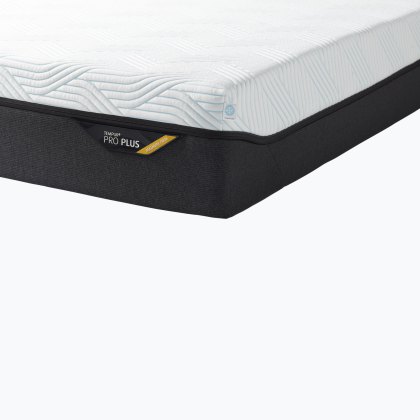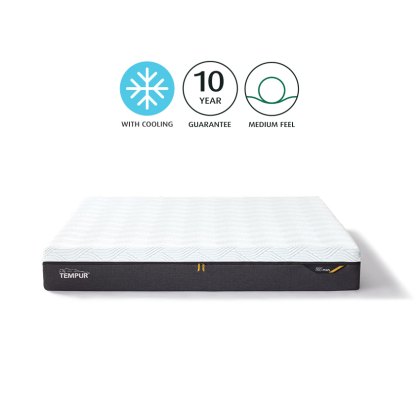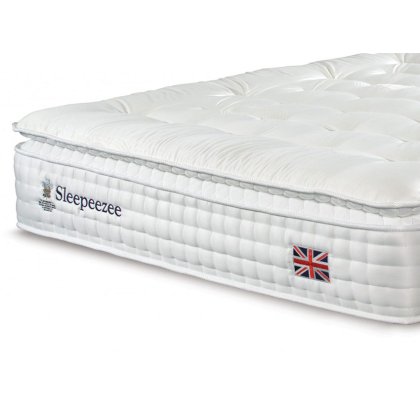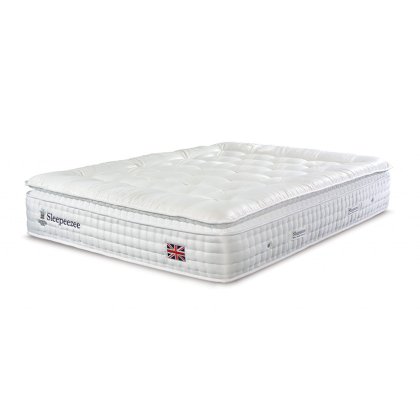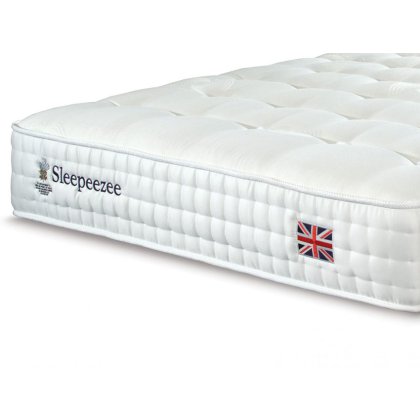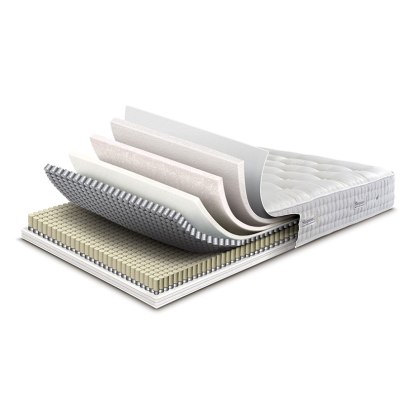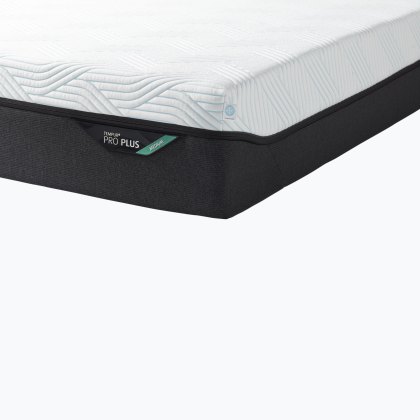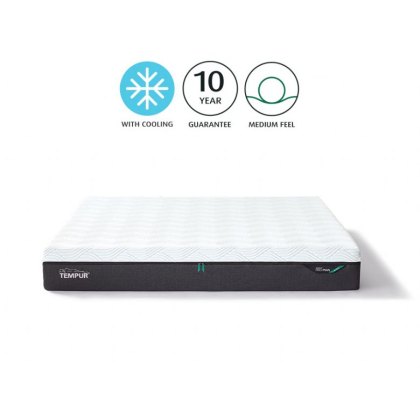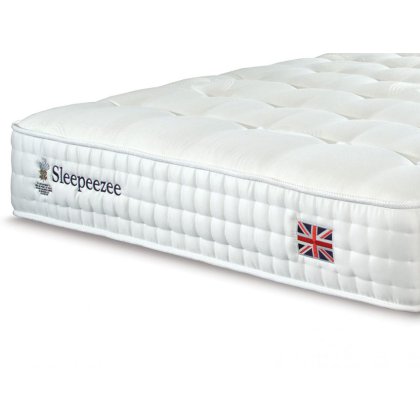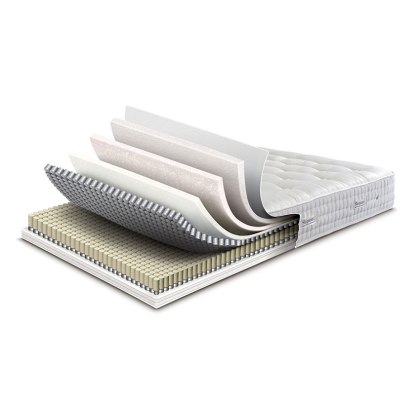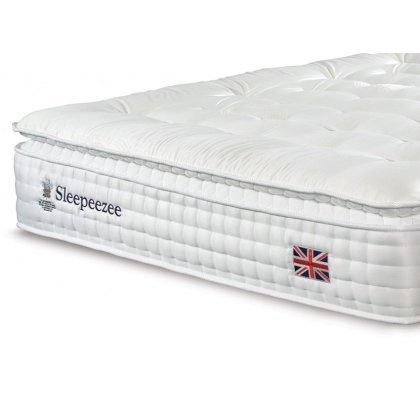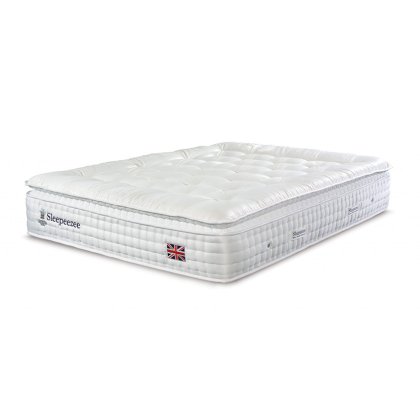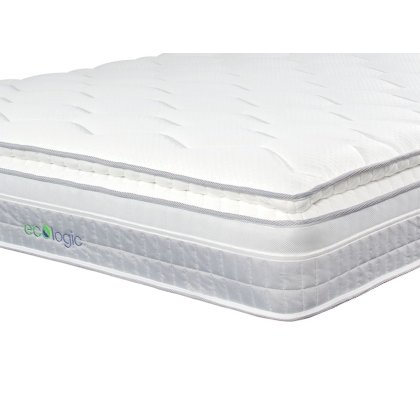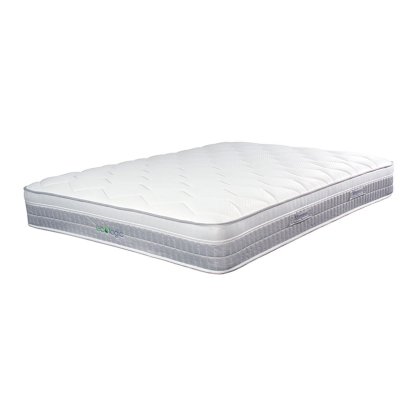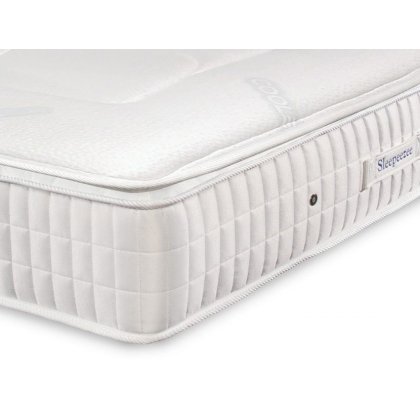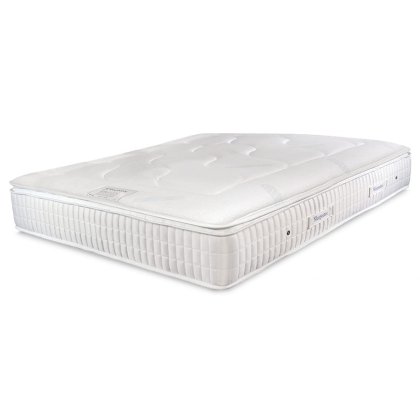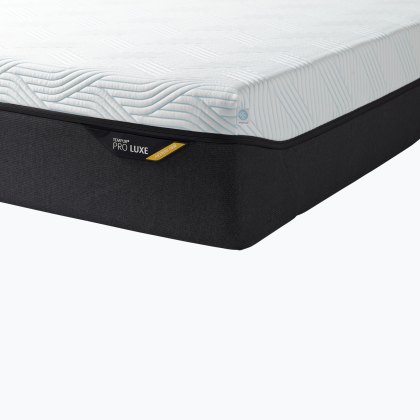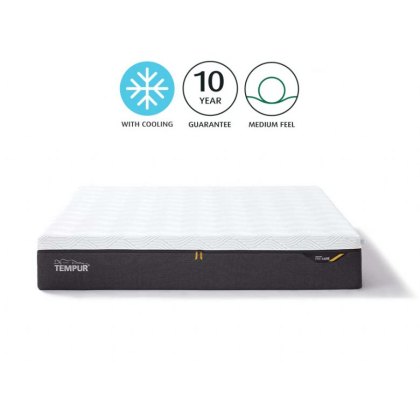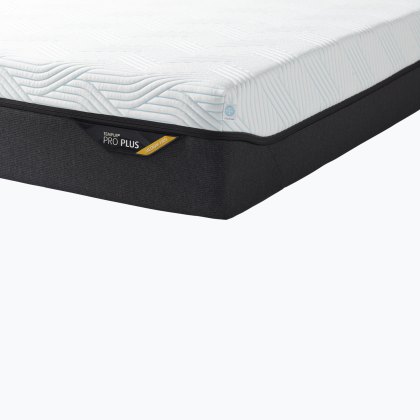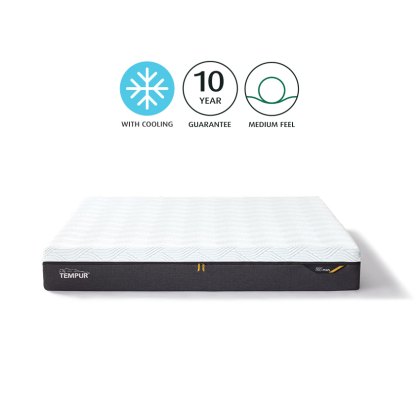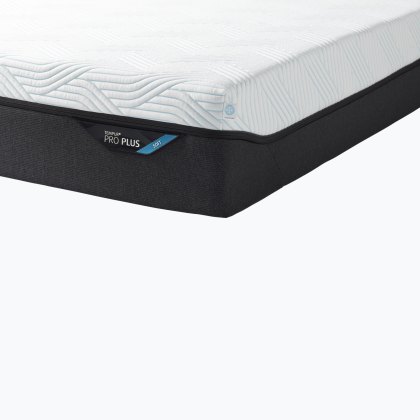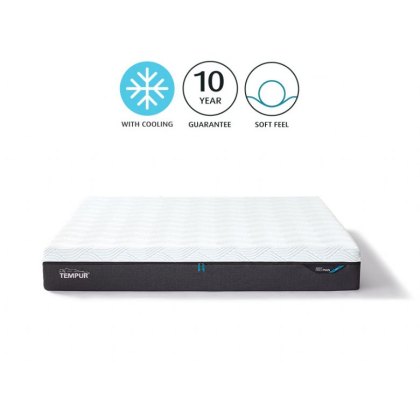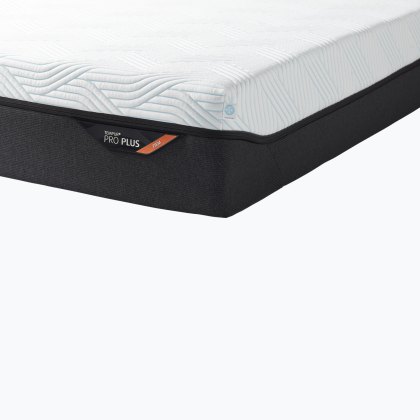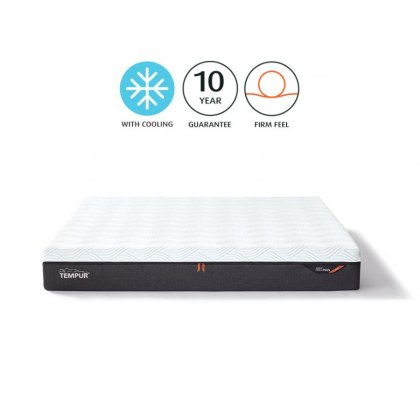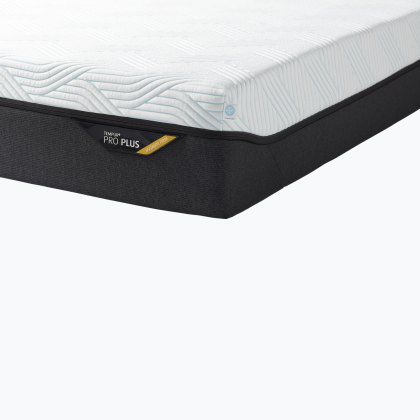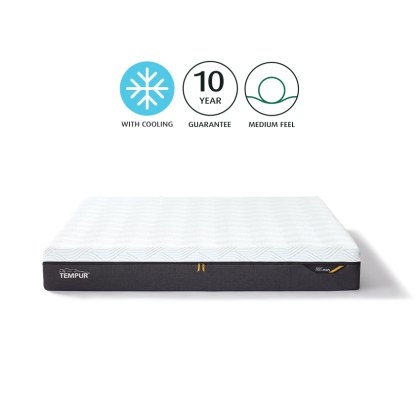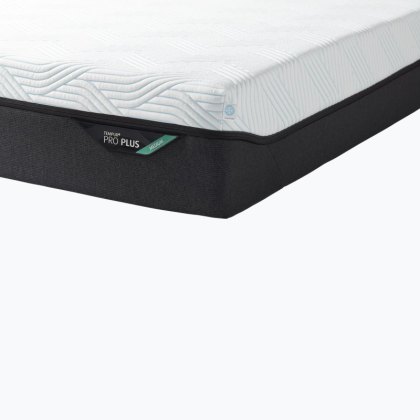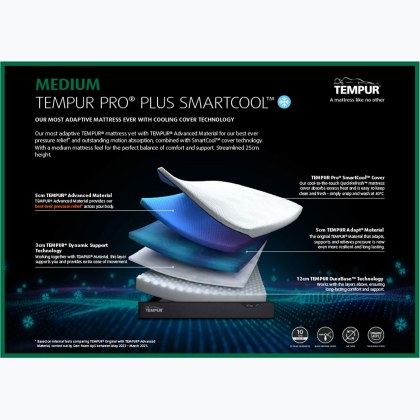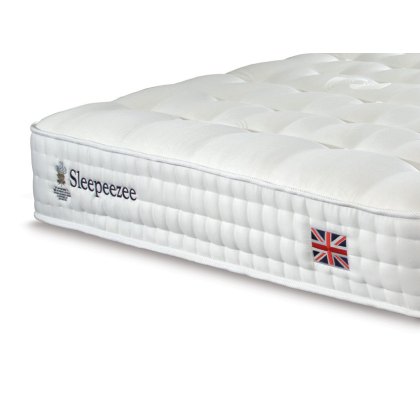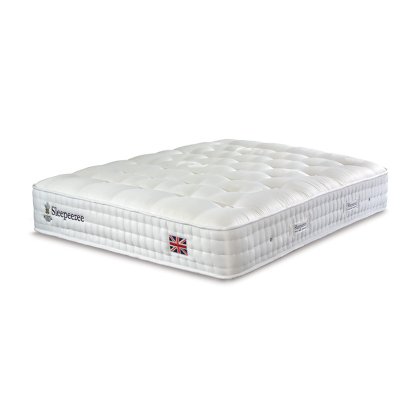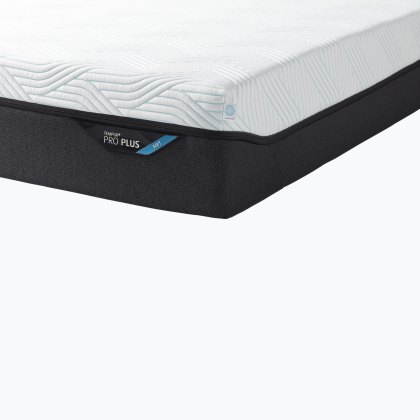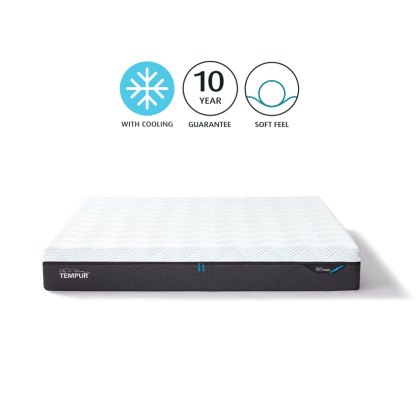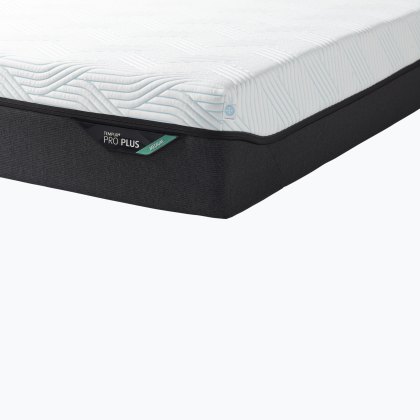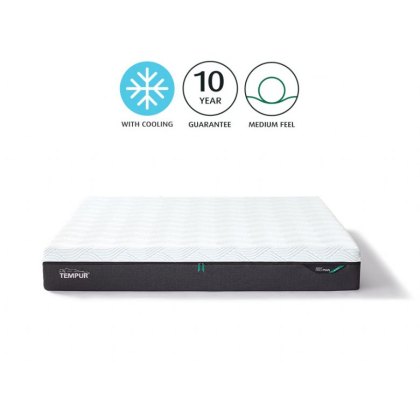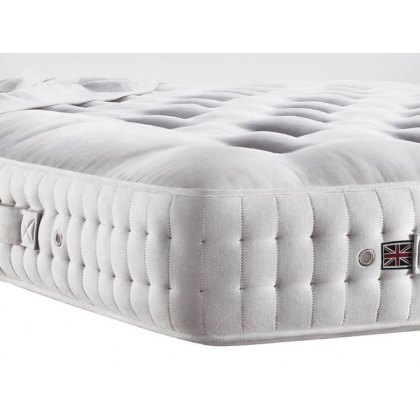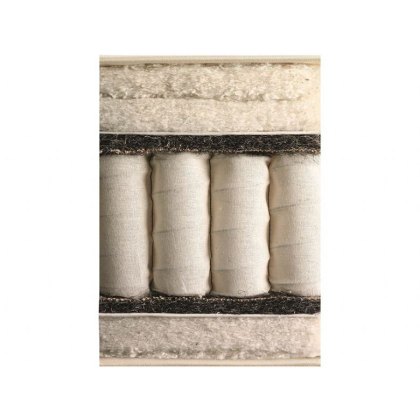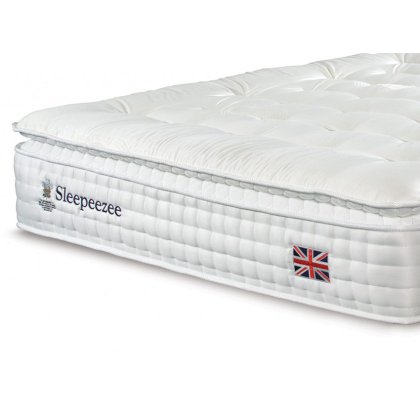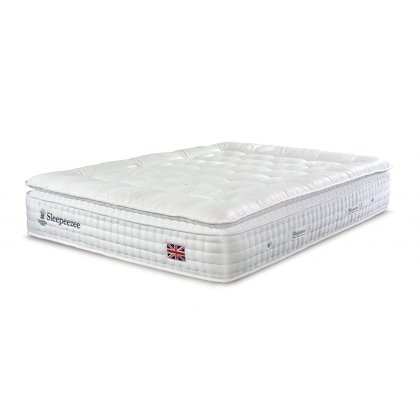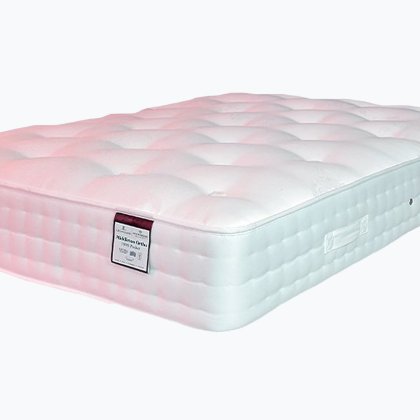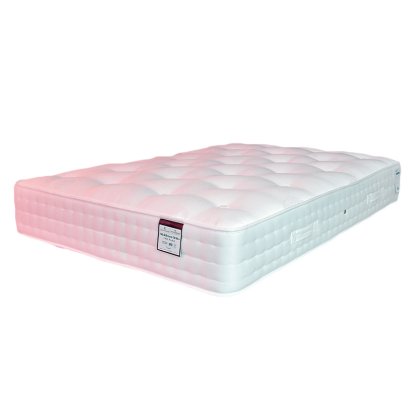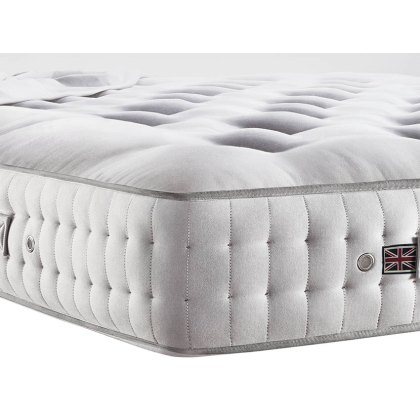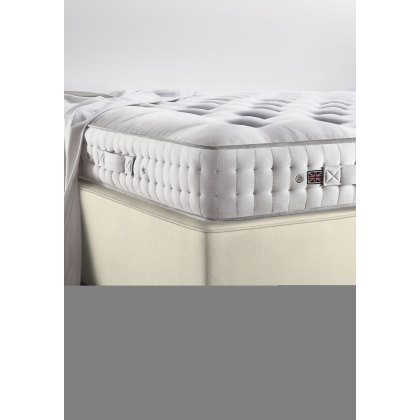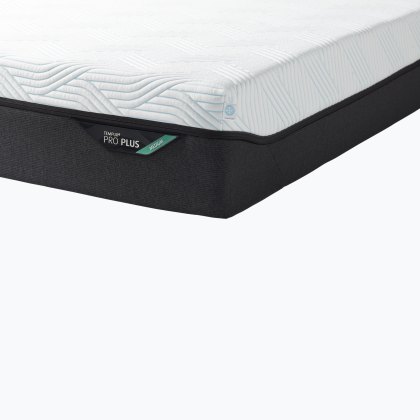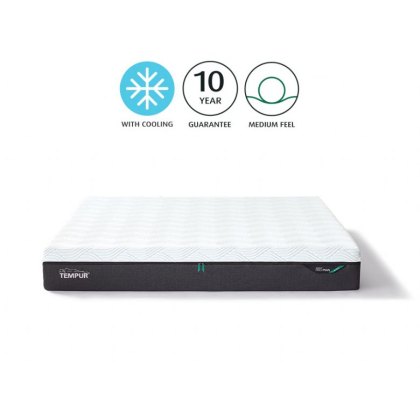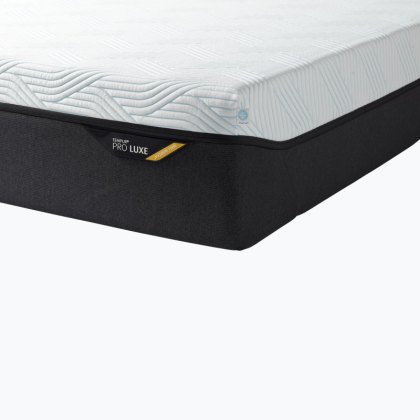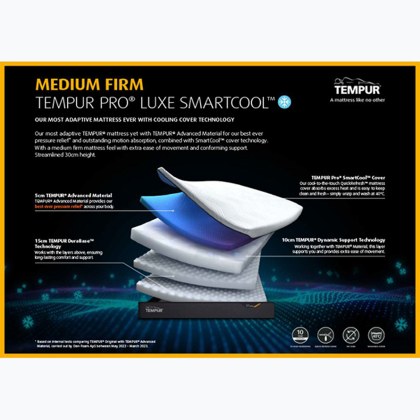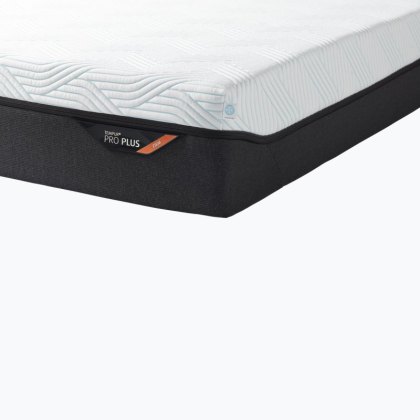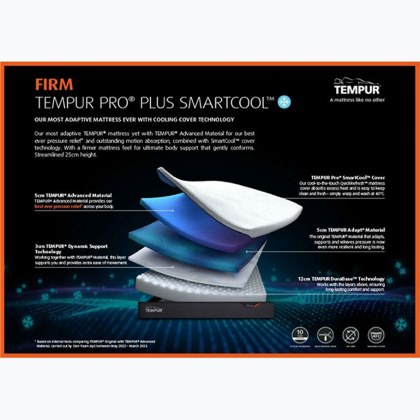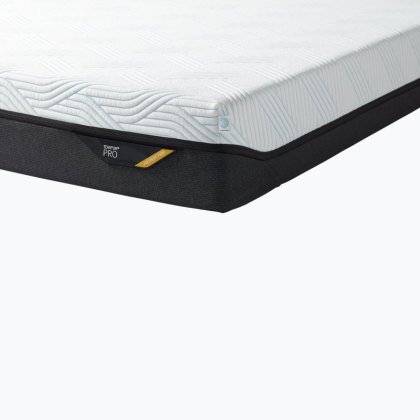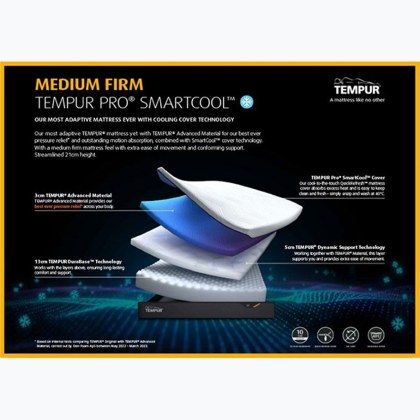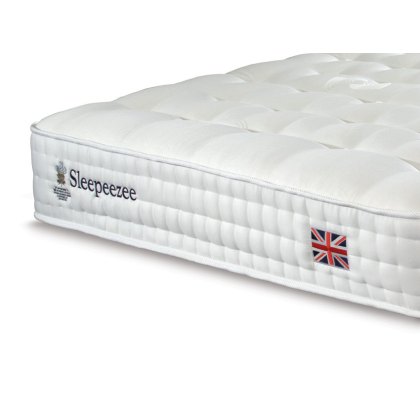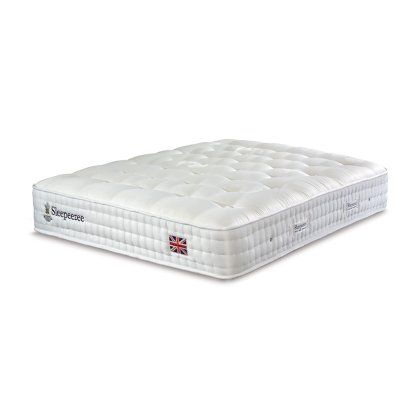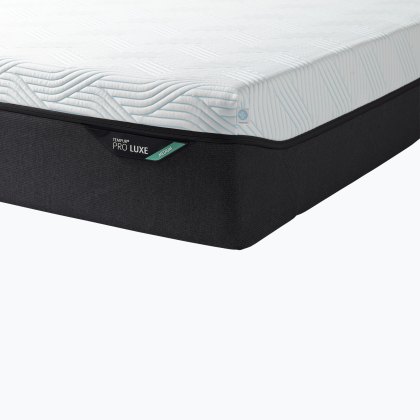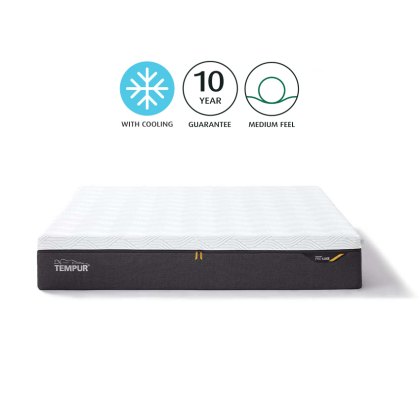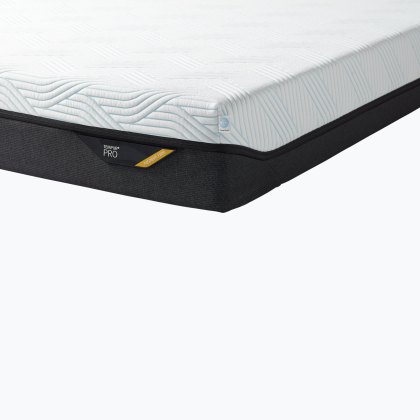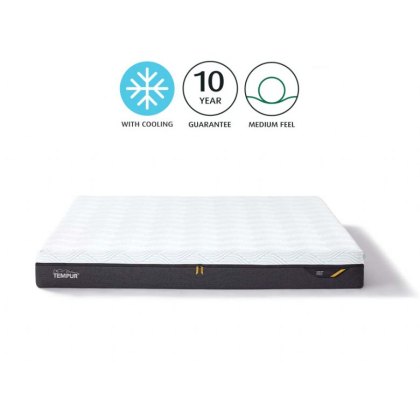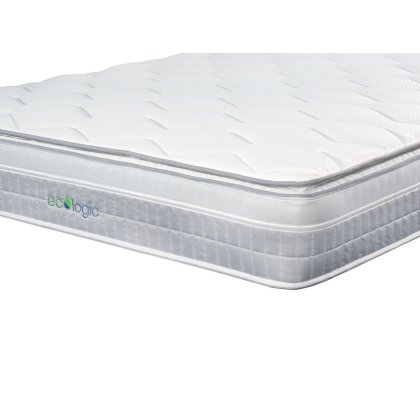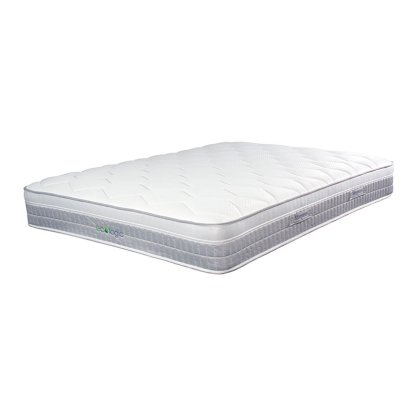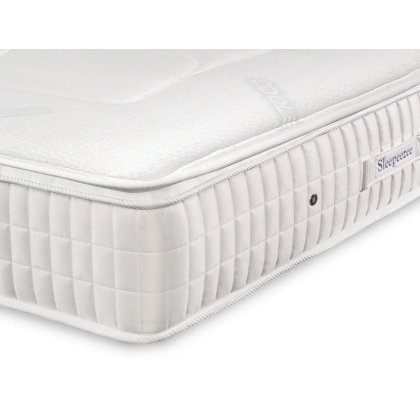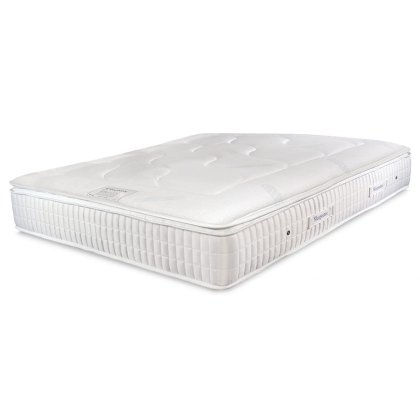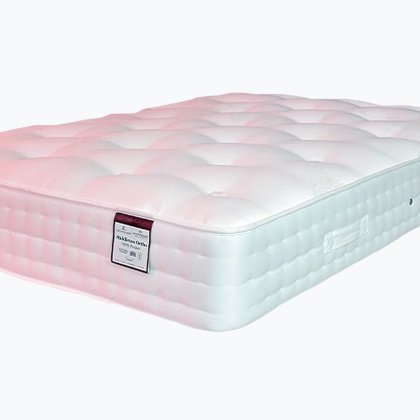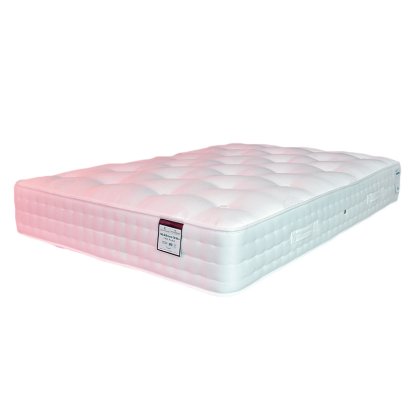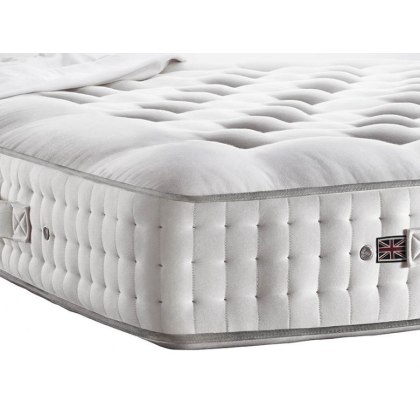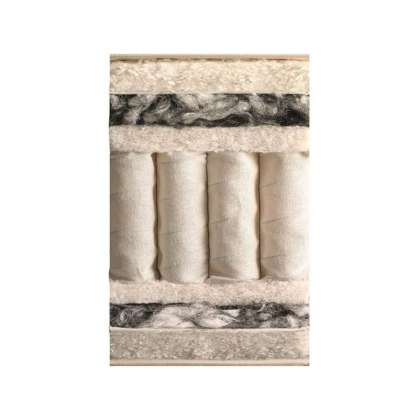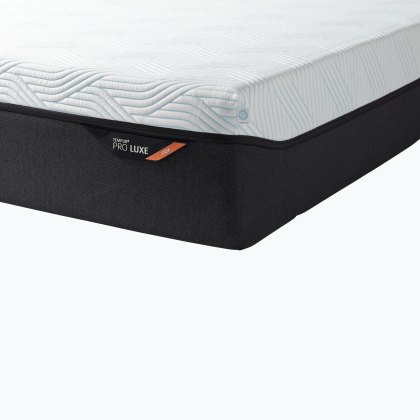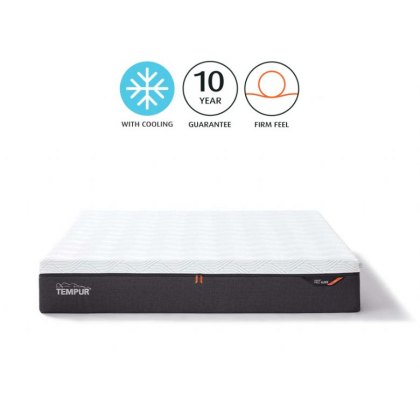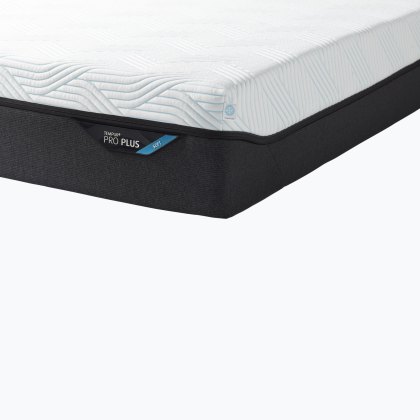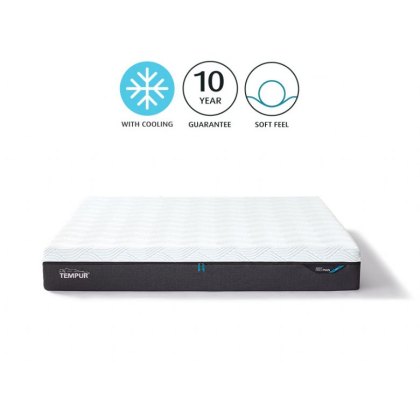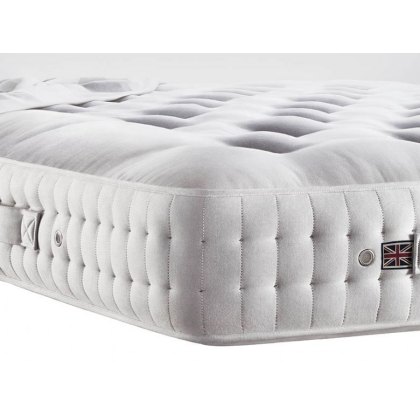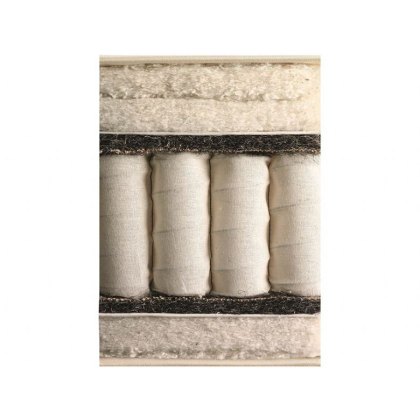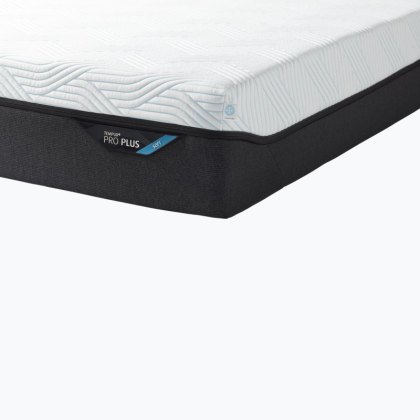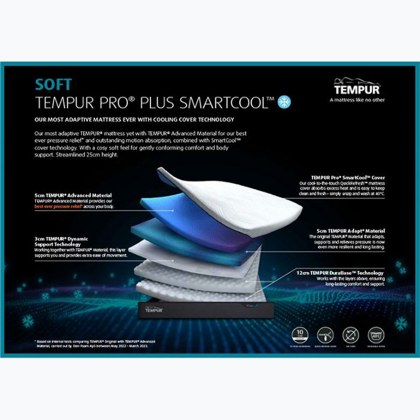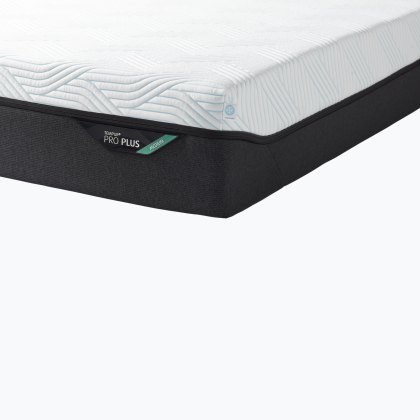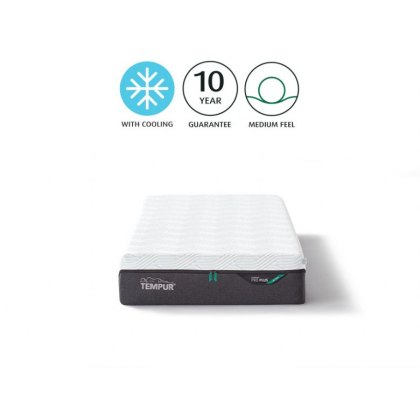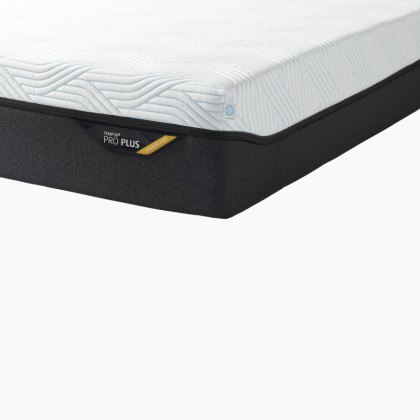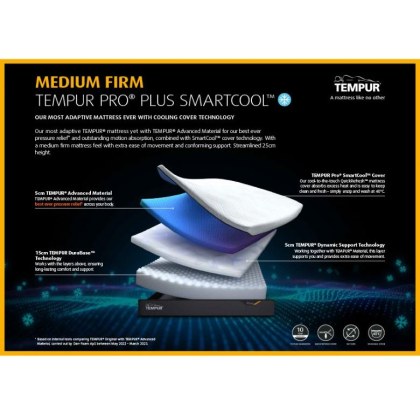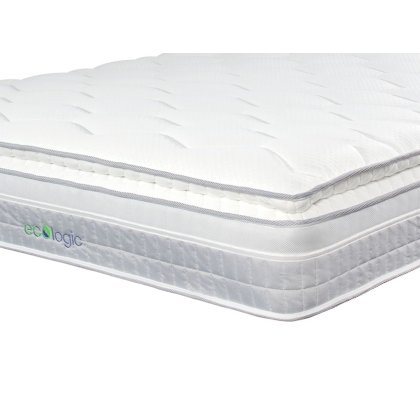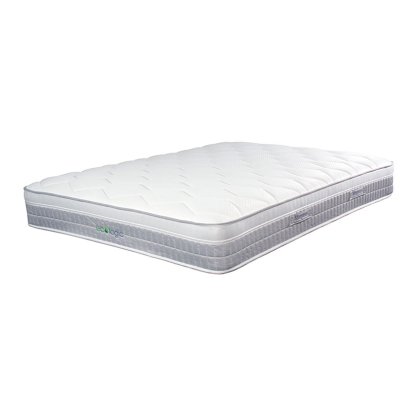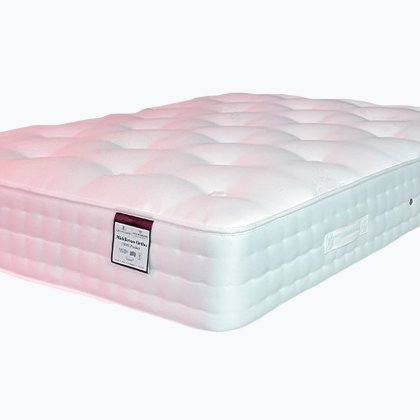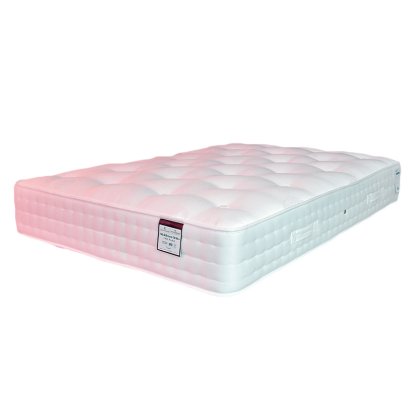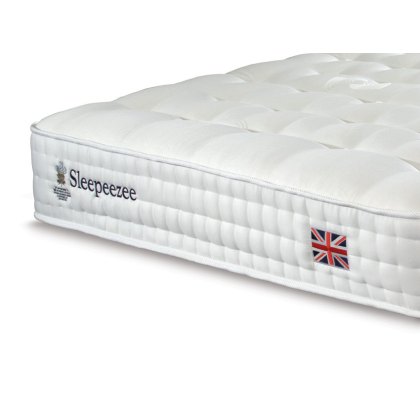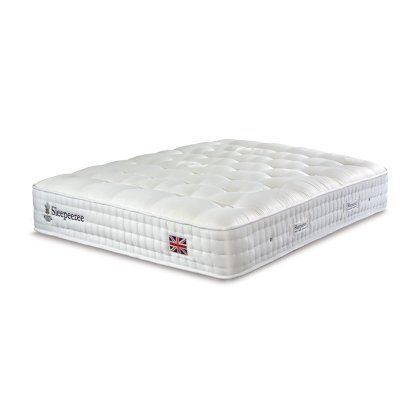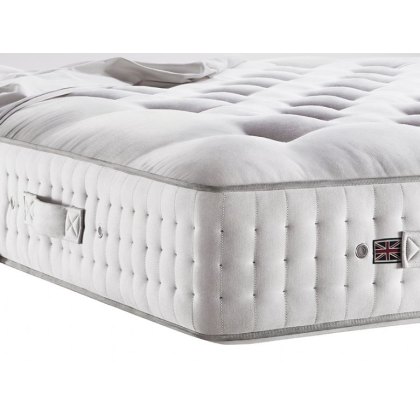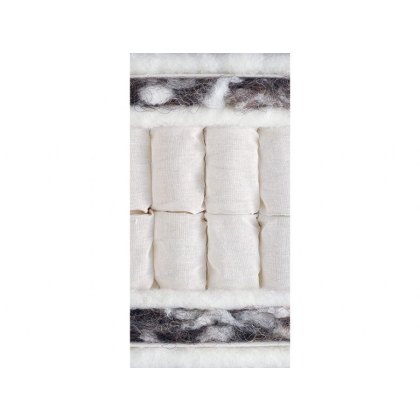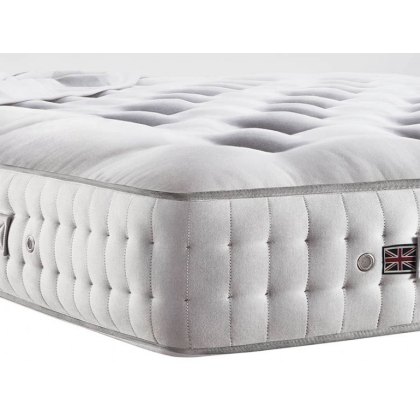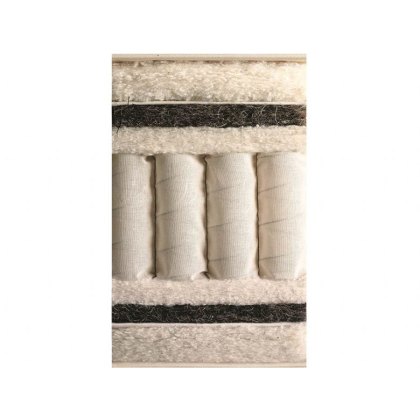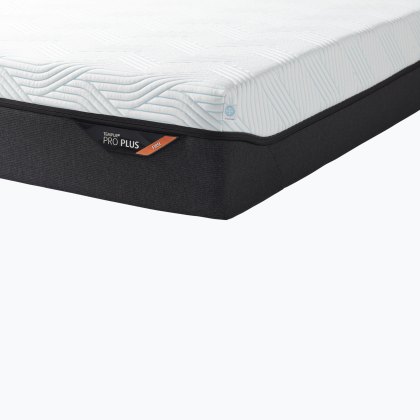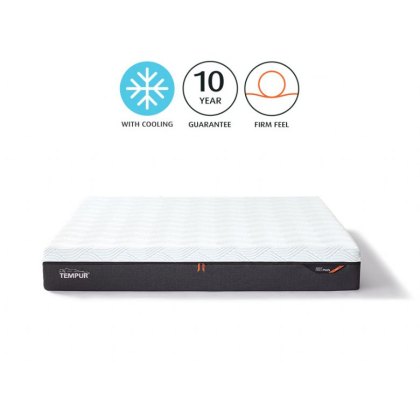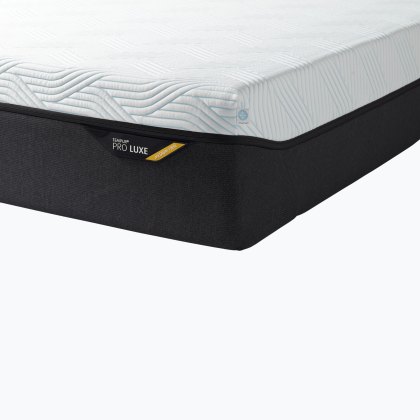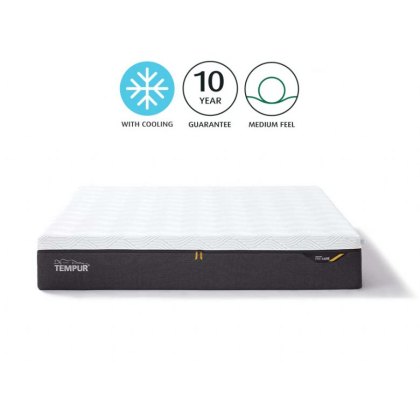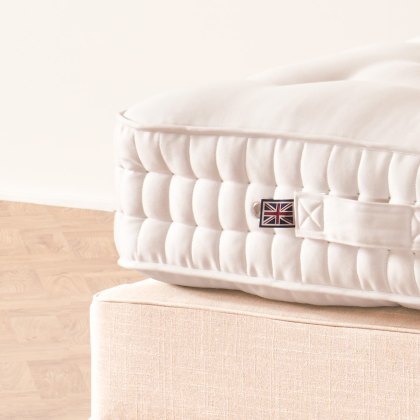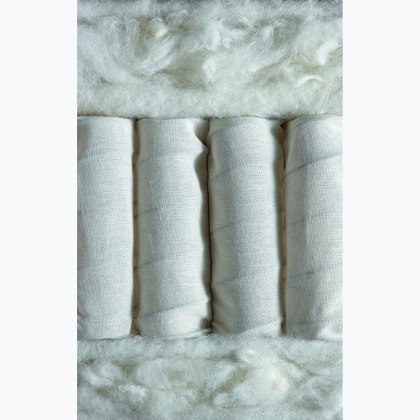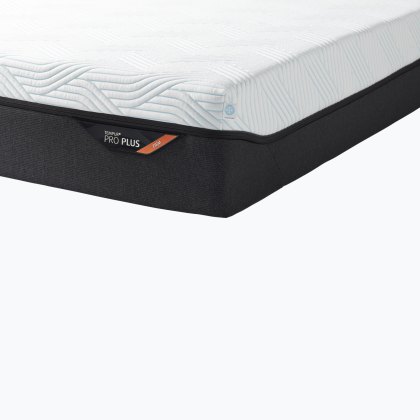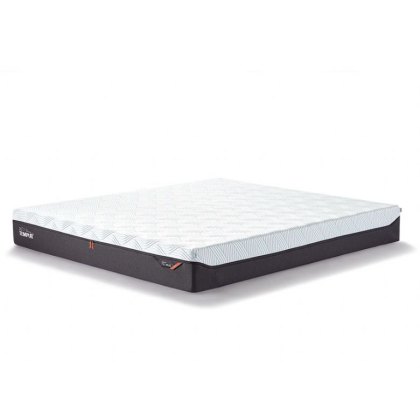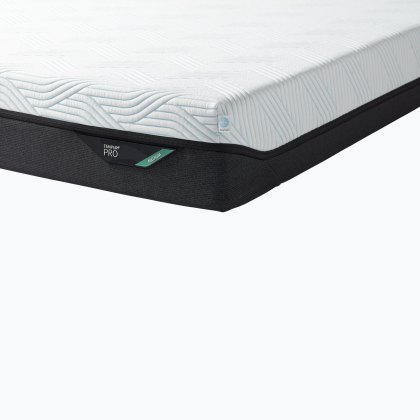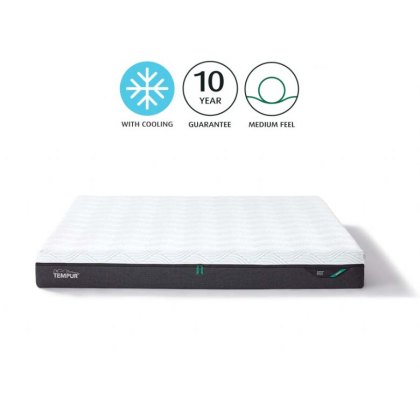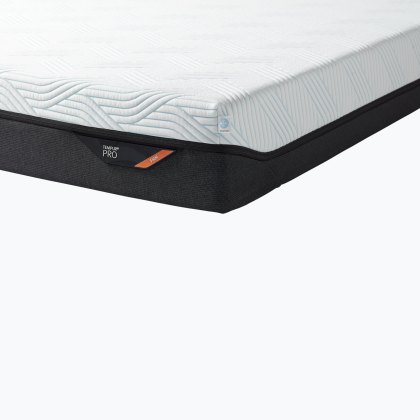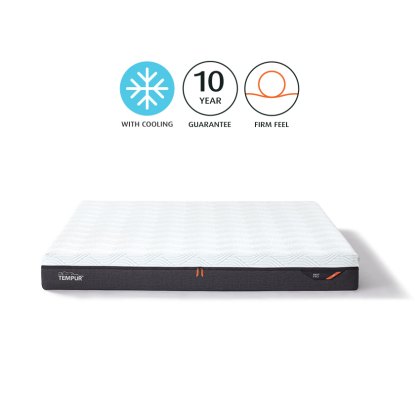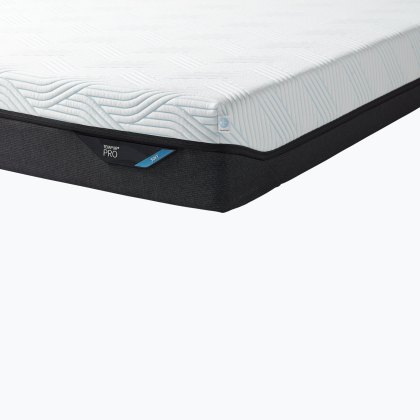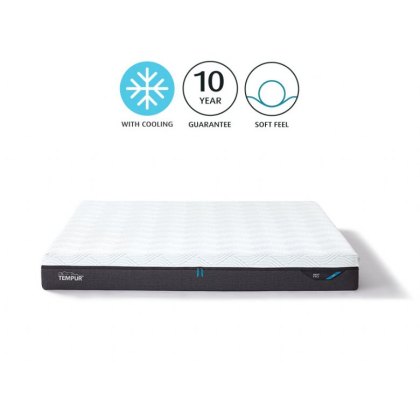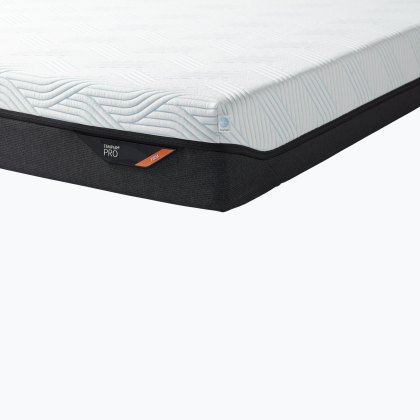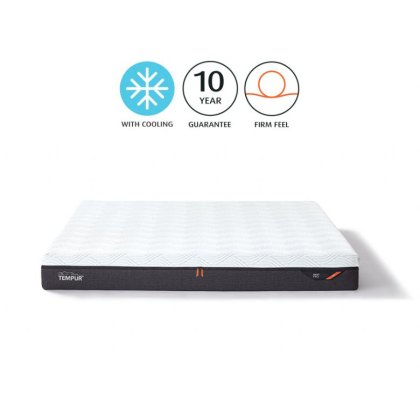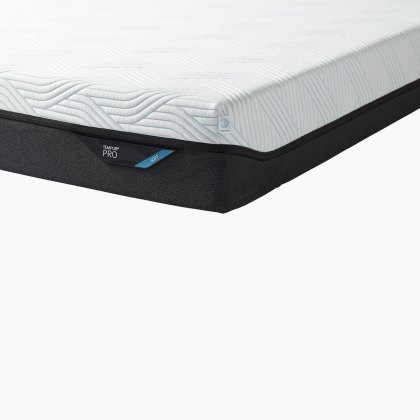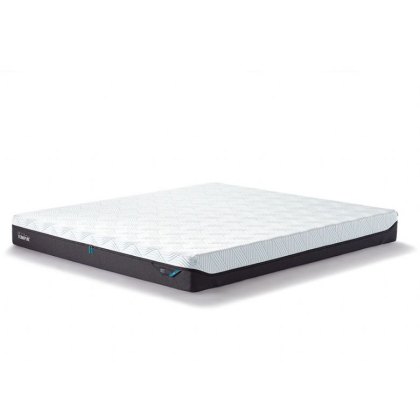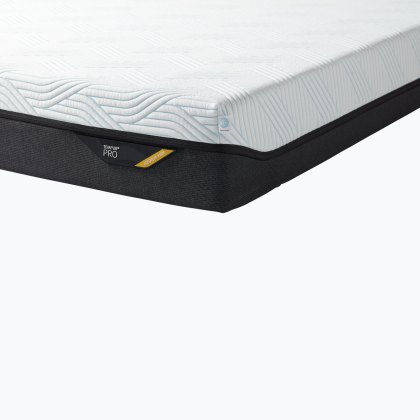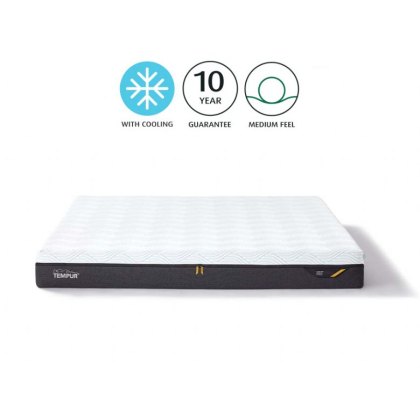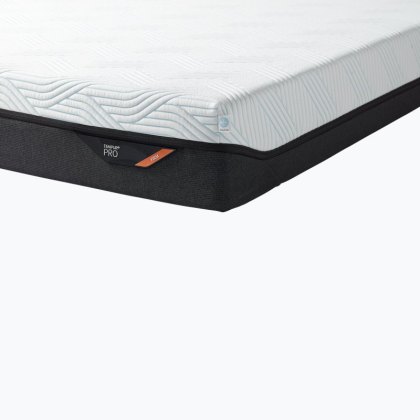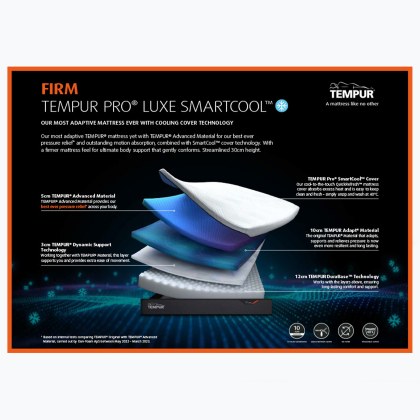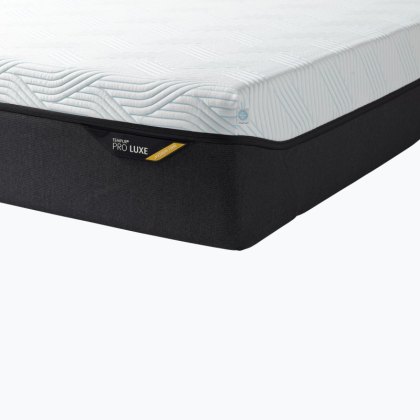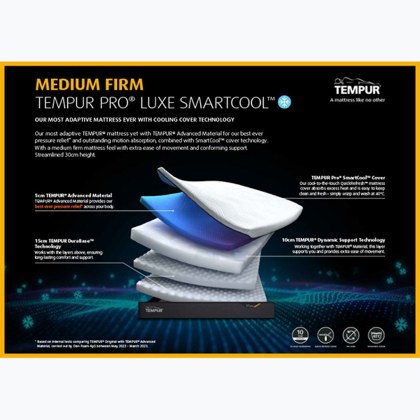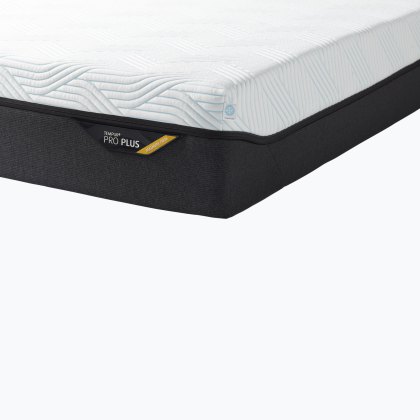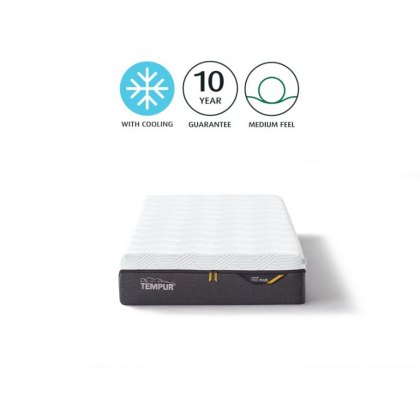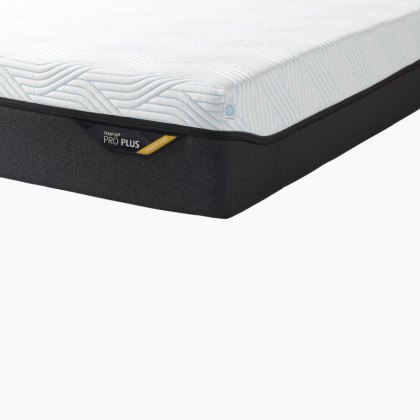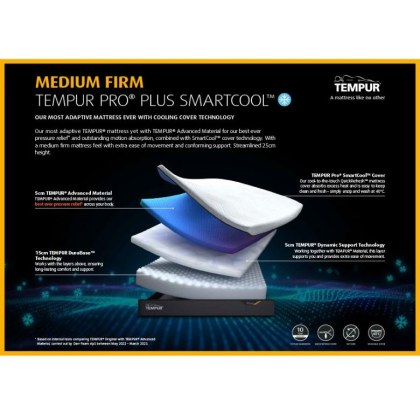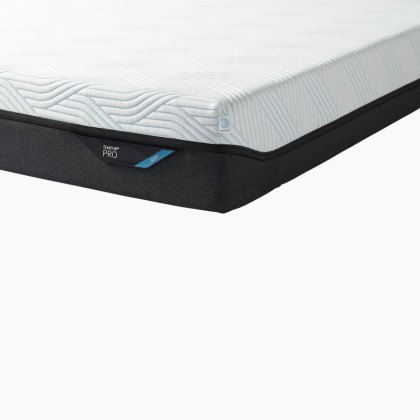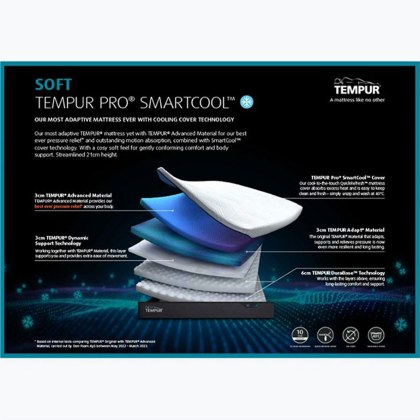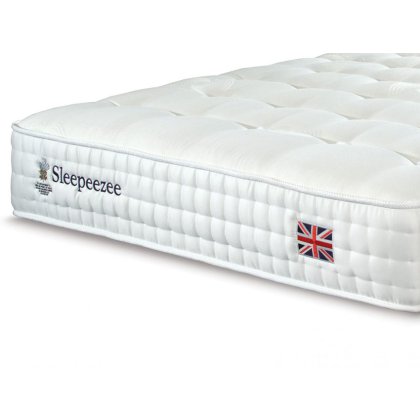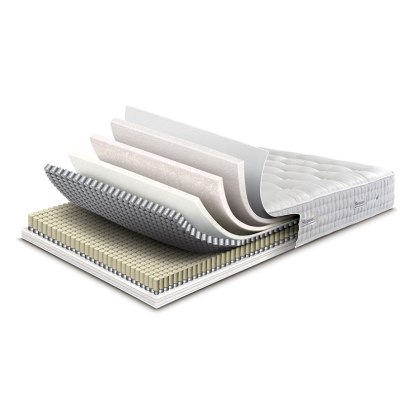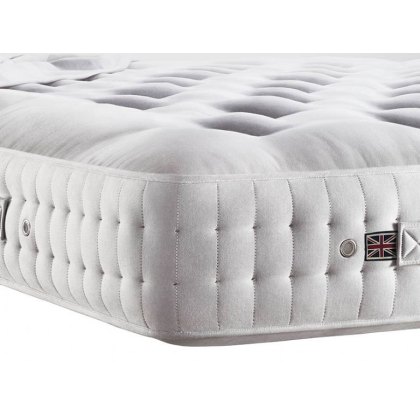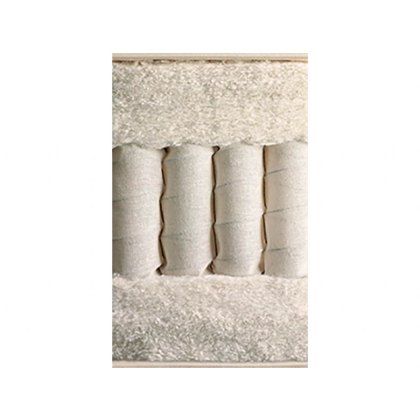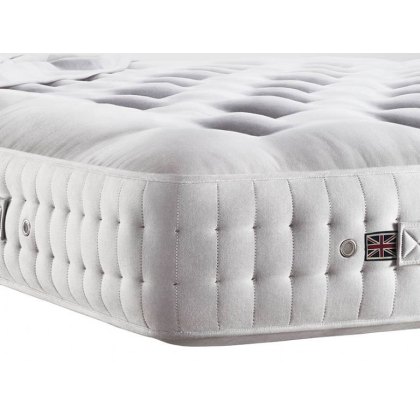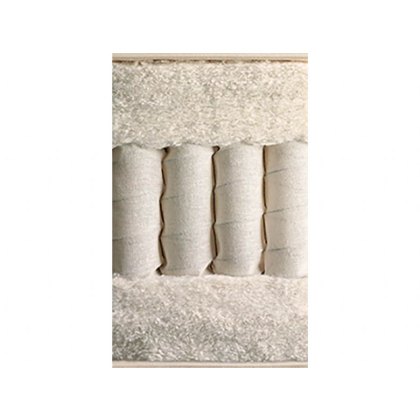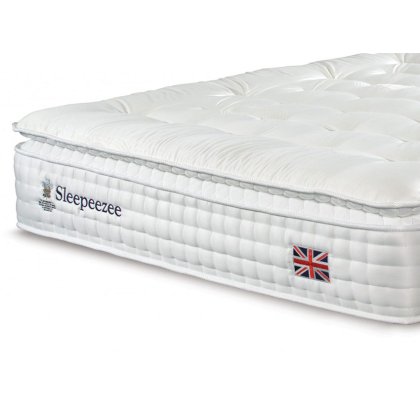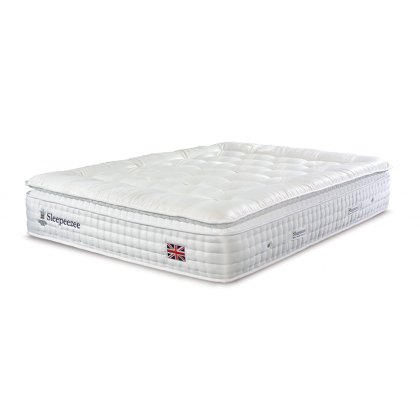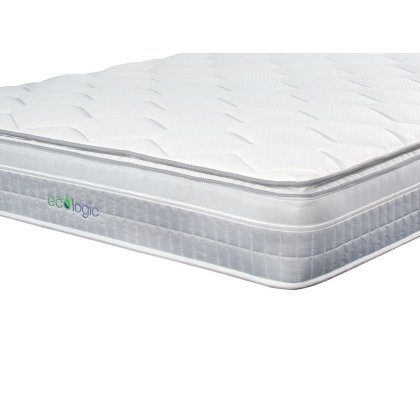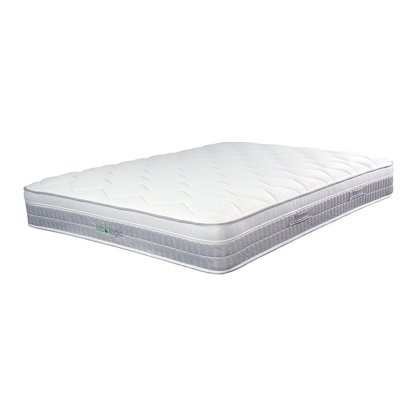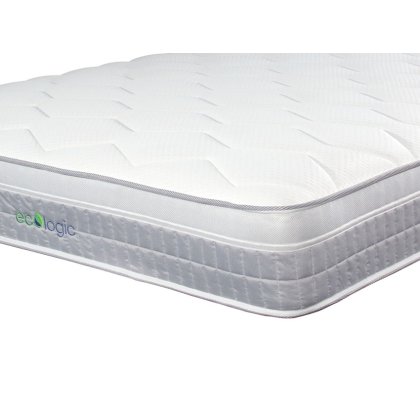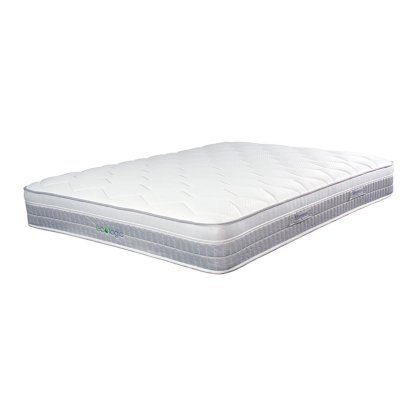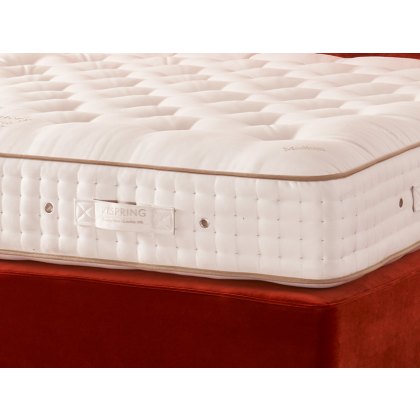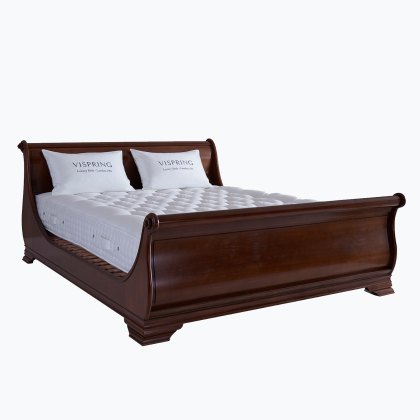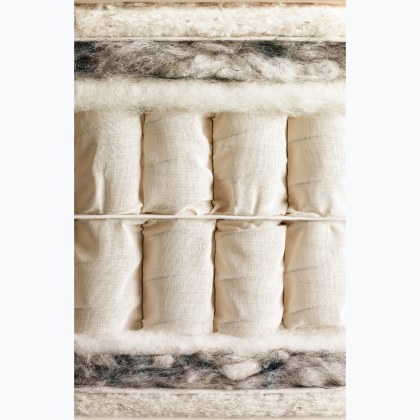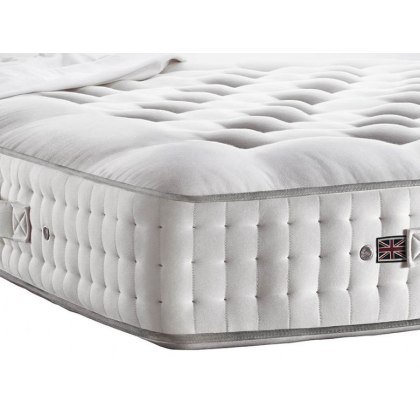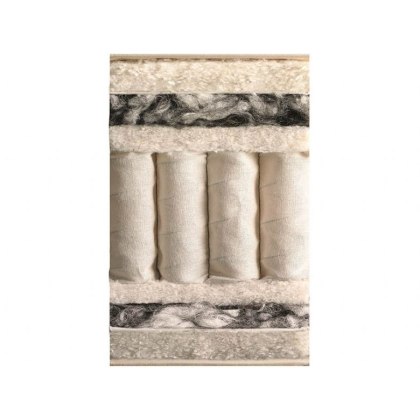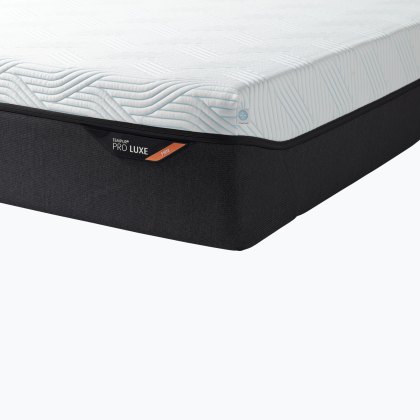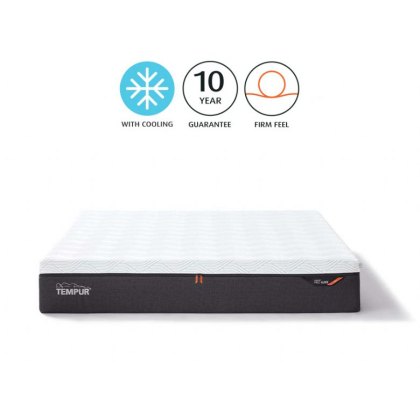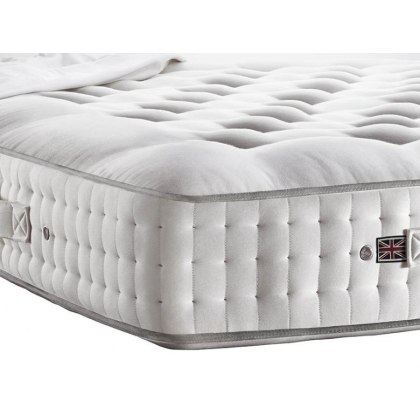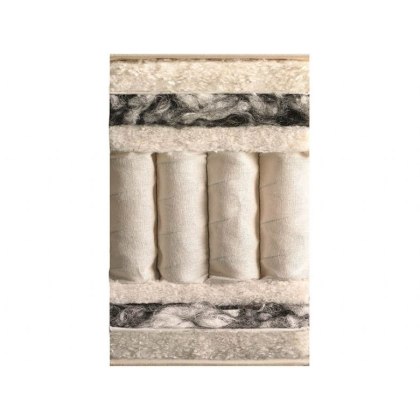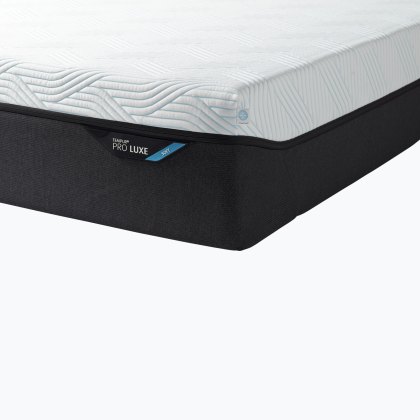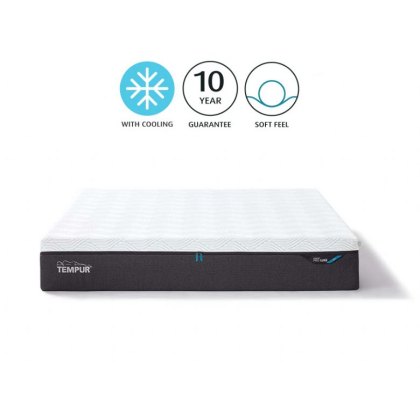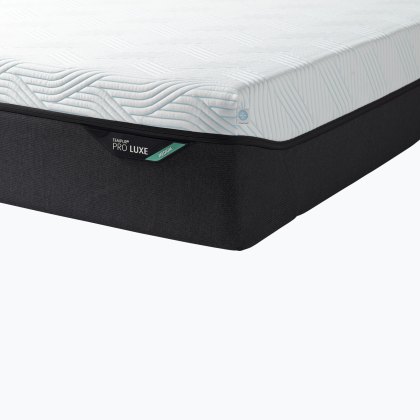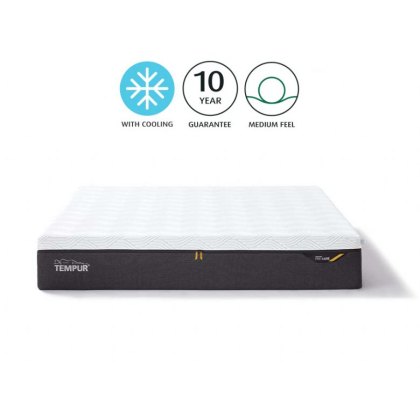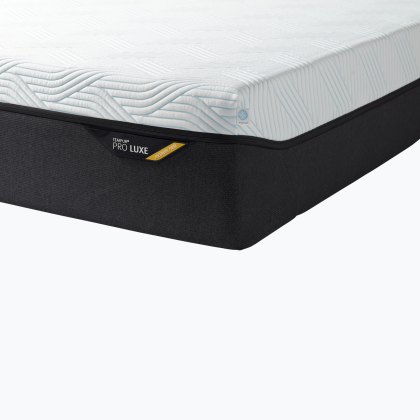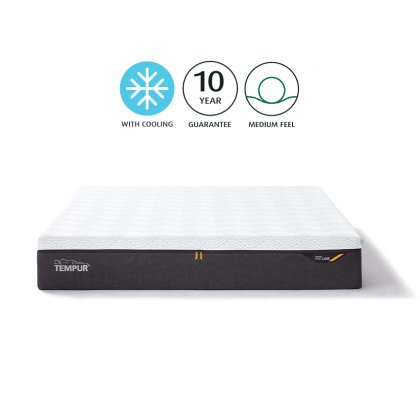Mattresses
Tempur Pro Plus 25cm SmartCool - Medium/Firm King Size Mattress
The TEMPUR PRO® Plus SmartCool™ mattress is 25 cm high and designed to deliver our best ever pressure relief while providing excellent motion absorption.
Available in Soft, Medium, Medium Firm and Firm tensions, the TEMPUR PRO® PLUS SmartCool™ Mattress provides a tailored sleep experience with ultimate comfort and support.
from £3585
Sleepeezee Portobello 3200 King Mattress
Natural Fillings: Crafted with a blend of natural fillings for a truly luxurious feel. 100% UK Sourced: We're proud to use the finest British wool and cashmere, supporting local craftsmanship. Softer Support: The medium-soft support of this mattress ensures your spine is aligned for a restful sleep. Generous Depth: With a depth of 33cm, this mattress provides the perfect balance of support...
£1655
Sleepeezee Shaftesbury 2600 King Mattress
2600 individual pocket springs
Super soft woollen tufts
Damask cover
Double-sided, turnable mattress
Traditional side stitched borders
Layer of British wool and silk
£1379
Tempur Pro Plus 25cm SmartCool - Medium King Size Mattress
The TEMPUR PRO® Plus SmartCool™ mattress is 25 cm high and designed to deliver our best ever pressure relief* while providing excellent motion absorption.
Available in Soft, Medium, Medium Firm and Firm tensions, the TEMPUR PRO® PLUS SmartCool™ Mattress provides a tailored sleep experience with ultimate comfort and support.
from £3585
Sleepeezee Shaftesbury 2600 Double Mattress
2600 individual pocket springs
Super soft woollen tufts
Damask cover
Double-sided, turnable mattress
Traditional side stitched borders
Layer of British wool and silk
£1149
Sleepeezee Portobello 3200 Super King Mattress
Crafted with a blend of natural fillings for a truly luxurious feel
100% UK Sourced
Crafted with the finest British wool and cashmere, supporting local craftsmanship
Medium soft support of this mattress ensures your spine is aligned for a restful sleep
With a depth of 33cm, this mattress provides the perfect balance of support and comfort
Non-Turn Design for convenience
£1799
Sleepeezee Eco 1800 King Mattress
Unwind in superior comfort with 1800 premium-quality pocketed nano springs and traditional pocket springs. These springs adjust independently, ensuring personalized support for all body shapes. Embrace a natural, highly durable material that delivers consistent pressure relief during your slumber. With inherent antimicrobial properties, it promotes a clean and healthy sleep environment. ...
£1299
Sleepeezee Cooler Crystal Comfort King Mattress
Traditional Artisan Skills: We champion traditional artisan skills, ensuring that each mattress is a testament to the craftsmanship of the past and the innovation of the present. Stay Cool Gel Technology: Our mattresses feature Stay Cool Gel, a supportive and breathable gel that channels away excess body heat,. 1800 Springs for Perfect Support: Experience the unparalleled support of 1800 springs,...
£1075
Tempur Pro Luxe 30cm SmartCool - Medium/Firm Super King Mattress
Experience the height of personalised comfort with the TEMPUR PRO® Luxe SmartCool™ Mattress. Crafted with TEMPUR® Advanced Material, it delivers our most exceptional pressure relief* yet, adapting seamlessly to your body’s unique shape, weight and warmth.
The SmartCool™ cover, designed to draw away excess heat, ensures you stay cool and comfortable throughout the night....
from £5045
Tempur Pro Plus 25cm SmartCool - Medium/Firm Super King Mattress
The TEMPUR PRO® Plus SmartCool™ mattress is 25 cm high and designed to deliver our best ever pressure relief* while providing excellent motion absorption.
Available in Soft, Medium, Medium Firm and Firm tensions, the TEMPUR PRO® PLUS SmartCool™ Mattress provides a tailored sleep experience with ultimate comfort and support.
from £4115
Tempur Pro Plus 25cm SmartCool - Soft King Size Mattress
The TEMPUR PRO® Plus SmartCool™ mattress is 25 cm high and designed to deliver our best ever pressure relief* while providing excellent motion absorption.
Available in Soft, Medium, Medium Firm and Firm tensions, the TEMPUR PRO® PLUS SmartCool™ Mattress provides a tailored sleep experience with ultimate comfort and support.
from £3585
Tempur Pro Plus 25cm SmartCool - Firm King Size Mattress
The TEMPUR PRO® Plus SmartCool™ mattress is 25 cm high and designed to deliver our best ever pressure relief* while providing excellent motion absorption.
Available in Soft, Medium, Medium Firm and Firm tensions, the TEMPUR PRO® PLUS SmartCool™ Mattress provides a tailored sleep experience with ultimate comfort and support.
from £3585
Tempur Pro Plus 25cm SmartCool - Medium/Firm Double Mattress
The TEMPUR PRO® Plus SmartCool™ mattress is 25 cm high and designed to deliver our best ever pressure relief* while providing excellent motion absorption.
Available in Soft, Medium, Medium Firm and Firm tensions, the TEMPUR PRO® PLUS SmartCool™ Mattress provides a tailored sleep experience with ultimate comfort and support.
from £3055
Tempur Pro Plus 25cm SmartCool - Medium Long Single Mattress
The TEMPUR PRO® Plus SmartCool™ mattress is 25 cm high and designed to deliver our best ever pressure relief* while providing excellent motion absorption.
Available in Soft, Medium, Medium Firm and Firm tensions, the TEMPUR PRO® PLUS SmartCool™ Mattress provides a tailored sleep experience with ultimate comfort and support.
from £2259
Sleepeezee Carnaby 1400 Double Mattress
Perfectly British Craftsmanship: Handmade in the UK with attention to detail Natural Materials: Two layers of 100% British wool for comfort and breathability Optimal Support: Maintains your sleeping position throughout the night Temperature Regulation: Ensures a comfortable sleep environment Depth: 26cm, Non-Turn for convenience Natural Fillings: Experience the luxury of natural...
£899
Tempur Pro Plus 25cm SmartCool - Soft Super King Mattress
The TEMPUR PRO® Plus SmartCool™ mattress is 25 cm high and designed to deliver our best ever pressure relief* while providing excellent motion absorption.
Available in Soft, Medium, Medium Firm and Firm tensions, the TEMPUR PRO® PLUS SmartCool™ Mattress provides a tailored sleep experience with ultimate comfort and support.
from £4115
Tempur Pro Plus 25cm SmartCool - Medium Super King Mattress
The TEMPUR PRO® Plus SmartCool™ mattress is 25 cm high and designed to deliver our best ever pressure relief* while providing excellent motion absorption.
Available in Soft, Medium, Medium Firm and Firm tensions, the TEMPUR PRO® PLUS SmartCool™ Mattress provides a tailored sleep experience with ultimate comfort and support.
from £4115
Vispring Baronet Superb King Mattress
Hand made in the UK 1326 Pocket Springs 21cm Deep Hand tufted with felt washers Double side stitching Horsehair needle-teased onto hessian 1000gsm bonded Platinum Certified British fleece wool and cotton 1200gsm blended Platinum Certified British fleece wool and cotton
£3135
Sleepeezee Portobello 3200 Double Mattress
Natural Fillings: Crafted with a blend of natural fillings for a truly luxurious feel. 100% UK Sourced: We're proud to use the finest British wool and cashmere, supporting local craftsmanship. Softer Support: The medium-soft support of this mattress ensures your spine is aligned for a restful sleep. Generous Depth: With a depth of 33cm, this mattress provides the perfect balance of support...
£1499
Middleton Ortho 1000 Double Natural Pocket Mattress
Equasleep Innovation: Redefine relaxation with personalised comfort from Equasleep technology Superior Support: Enjoy targeted support and pressure relief with 1000 pocket springs AdvantEdge Comfort: Experience edge-to-edge comfort through AdvantEdge encapsulation technology No-Turn Design: Simplify maintenance with the no-turn design for enduring comfort
£599
Vispring Herald Superb King Mattress
Hand made in the UK 1476 Pocket Springs 21cm Deep Hand tufted with felt washers Double side stitching 1000gsm bonded Platinum Certified British fleece wool and cotton 1200gsm long stranded horsehair 1200gsm Platinum Certified British fleece wool and cotton
£4515
Tempur Pro Plus 25cm SmartCool - Medium Double Mattress
The TEMPUR PRO® Plus SmartCool™ mattress is 25 cm high and designed to deliver our best ever pressure relief* while providing excellent motion absorption.
Available in Soft, Medium, Medium Firm and Firm tensions, the TEMPUR PRO® PLUS SmartCool™ Mattress provides a tailored sleep experience with ultimate comfort and support.
from £3055
Tempur Pro Luxe 30cm SmartCool - Medium/Firm Long Single Mattress
Experience the height of personalised comfort with the TEMPUR PRO® Luxe SmartCool™ Mattress. Crafted with TEMPUR® Advanced Material, it delivers our most exceptional pressure relief* yet, adapting seamlessly to your body’s unique shape, weight and warmth.
The SmartCool™ cover, designed to draw away excess heat, ensures you stay cool and comfortable throughout the night....
from £2789
Tempur Pro Plus 25cm SmartCool - Firm Long Single Mattress
The TEMPUR PRO® Plus SmartCool™ mattress is 25 cm high and designed to deliver our best ever pressure relief* while providing excellent motion absorption.
Available in Soft, Medium, Medium Firm and Firm tensions, the TEMPUR PRO® PLUS SmartCool™ Mattress provides a tailored sleep experience with ultimate comfort and support.
from £2259
Tempur Pro 21cm SmartCool - Medium/Firm Small Single Mattress
The TEMPUR PRO® SmartCool™ Mattress is our most adaptive and advanced mattress range, designed to conform precisely to your body shape, weight and warmth. With TEMPUR® Advanced Material and SmartCool™ Technology, it delivers exceptional pressure relief* and absorbs excess heat, keeping you feeling fresh throughout the night. Available in three heights and four comfort feels, it...
from £1859
Sleepeezee Carnaby 1400 King Mattress
Natural Luxury: Handmade in the UK with two layers of 100% British wool Firm Support: Optimum support for achy joints and muscle stiffness Perfectly British Craftsmanship: Part of our Perfectly British range Depth: 26cm Non-Turn 100% UK Sourced: Crafted with materials sourced entirely in the UK
£1049
Tempur Pro Luxe 30cm SmartCool - Medium Super King Mattress
Experience the height of personalised comfort with the TEMPUR PRO® Luxe SmartCool™ Mattress. Crafted with TEMPUR® Advanced Material, it delivers our most exceptional pressure relief* yet, adapting seamlessly to your body’s unique shape, weight and warmth.
The SmartCool™ cover, designed to draw away excess heat, ensures you stay cool and comfortable throughout the night....
from £5045
Tempur Pro 21cm SmartCool - Medium/Firm King Size Mattress
The TEMPUR PRO® SmartCool™ Mattress is our most adaptive and advanced mattress range, designed to conform precisely to your body shape, weight and warmth. With TEMPUR® Advanced Material and SmartCool™ Technology, it delivers exceptional pressure relief* and absorbs excess heat, keeping you feeling fresh throughout the night. Available in three heights and four comfort feels, it...
from £3055
Sleepeezee Eco 1400 Double Mattress
1400 premium traditional pocket springs that adapt independently, providing tailored comfort and support for every body shape. Embrace a natural and durable material that delivers consistent pressure relief during your slumber. Its inherent antimicrobial properties ensure a clean and hygienic sleeping environment Experience the benefits of dust mite resistance, keeping allergens at bay, while ventilated...
£1055
Sleepeezee Cooler Crystal Comfort Double Mattress
Traditional Artisan Skills: We champion traditional artisan skills, ensuring that each mattress is a testament to the craftsmanship of the past and the innovation of the present. Stay Cool Gel Technology: Our mattresses feature Stay Cool Gel, a supportive and breathable gel that channels away excess body heat,. 1800 Springs for Perfect Support: Experience the unparalleled support of 1800 springs,...
£949
Middleton Ortho 1000 King Natural Pocket Mattress
Equasleep Innovation: Revolutionary technology adapts to your body for a bespoke sleep experience Superior Support: 1000 pocket springs offer targeted support, proper alignment, and effective pressure relief AdvantEdge Encapsulation: Edge-to-edge comfort with a wider sleep surface and robust support No-Turn Design: Simplifies maintenance and preserves mattress longevity
£665
Vispring Regal Superb King Mattress
Hand made in the UK 1720 Pocket Springs 23cm Deep Hand tufted with felt washers Triple side stitching 1000gsm Bonded Platinum Certified British fleece wool and cotton 1200gsm long-stranded horsetail blended with Platinum Certified British fleece wool 900gsm blended real Shetland wool and cotton
£7485
Tempur Pro Luxe 30cm SmartCool - Firm King Size Mattress
Experience the height of personalised comfort with the TEMPUR PRO® Luxe SmartCool™ Mattress. Crafted with TEMPUR® Advanced Material, it delivers our most exceptional pressure relief* yet, adapting seamlessly to your body’s unique shape, weight and warmth.
The SmartCool™ cover, designed to draw away excess heat, ensures you stay cool and comfortable throughout the night....
from £4385
Tempur Pro Plus 25cm SmartCool - Soft Double Mattress
The TEMPUR PRO® Plus SmartCool™ mattress is 25 cm high and designed to deliver our best ever pressure relief* while providing excellent motion absorption.
Available in Soft, Medium, Medium Firm and Firm tensions, the TEMPUR PRO® PLUS SmartCool™ Mattress provides a tailored sleep experience with ultimate comfort and support.
from £3055
Vispring Baronet Superb Double Mattress
Hand made in the UK 1116 Pocket Springs 21cm Deep Hand tufted with felt washers Double side stitching Horsehair needle-teased onto hessian 1000gsm bonded Platinum Certified British fleece wool and cotton 1200gsm blended Platinum Certified British fleece wool and cotton
£2635
Tempur Pro Plus 25cm SmartCool - Soft Long Single Mattress
The TEMPUR PRO® Plus SmartCool™ mattress is 25 cm high and designed to deliver our best ever pressure relief* while providing excellent motion absorption.
Available in Soft, Medium, Medium Firm and Firm tensions, the TEMPUR PRO® PLUS SmartCool™ Mattress provides a tailored sleep experience with ultimate comfort and support.
from £2259
Tempur Pro Plus 25cm SmartCool - Medium Single Mattress
The TEMPUR PRO® Plus SmartCool™ mattress is 25 cm high and designed to deliver our best ever pressure relief* while providing excellent motion absorption.
Available in Soft, Medium, Medium Firm and Firm tensions, the TEMPUR PRO® PLUS SmartCool™ Mattress provides a tailored sleep experience with ultimate comfort and support.
from £2259
Tempur Pro Plus 25cm SmartCool - Medium/Firm Long Single Mattress
The TEMPUR PRO® Plus SmartCool™ mattress is 25 cm high and designed to deliver our best ever pressure relief* while providing excellent motion absorption.
Available in Soft, Medium, Medium Firm and Firm tensions, the TEMPUR PRO® PLUS SmartCool™ Mattress provides a tailored sleep experience with ultimate comfort and support.
from £2259
Sleepeezee Eco 1800 Double Mattress
Unwind in superior comfort with 1800 premium-quality pocketed nano springs and traditional pocket springs. These springs adjust independently, ensuring personalized support for all body shapes. Embrace a natural, highly durable material that delivers consistent pressure relief during your slumber. With inherent antimicrobial properties, it promotes a clean and healthy sleep environment. Enjoy...
£1199
Middleton Ortho 1000 Super King Natural Pocket Mattress
Equasleep Innovation: Revolutionary technology adapts to your body for a bespoke sleep experience Superior Support: 1000 pocket springs offer targeted support, proper alignment, and effective pressure relief AdvantEdge Encapsulation: Edge-to-edge comfort with a wider sleep surface and robust support No-Turn Design: Simplifies maintenance and preserves mattress longevity ...
£769
Sleepeezee Carnaby 1400 Single Mattress
Perfectly British Craftsmanship: Handmade in the UK with attention to detail Natural Materials: Two layers of 100% British wool for comfort and breathability Optimal Support: Maintains your sleeping position throughout the night Temperature Regulation: Ensures a comfortable sleep environment Depth: 26cm, Non-Turn for convenience Natural Fillings: Experience the luxury...
£685
Vispring Kingsbridge Double Mattress
Hand made in the UK 1716 Pocket Springs 23cm Deep 3 rows of hand side stitching 600gsm British fleece wool 1375gsm South American horsetail blended with 380gsm of hand teased Platinum Certified Devonshire fleece wool Overlaid with 300gsm of British fleece wool Hand tufted with felt washer
£7295
Vispring Herald Superb Super King Mattress
Hand made in the UK 1804 Pocket Springs 21cm Deep Hand tufted with felt washers Double side stitching 1000gsm bonded Platinum Certified British fleece wool and cotton 1200gsm long stranded horsehair 1200gsm Platinum Certified British fleece wool and cotton
£5645
Tempur Pro Plus 25cm SmartCool - Firm Super King Mattress
The TEMPUR PRO® Plus SmartCool™ mattress is 25 cm high and designed to deliver our best ever pressure relief* while providing excellent motion absorption.
Available in Soft, Medium, Medium Firm and Firm tensions, the TEMPUR PRO® PLUS SmartCool™ Mattress provides a tailored sleep experience with ultimate comfort and support.
from £4115
Tempur Pro Luxe 30cm SmartCool - Medium/Firm Double Mattress
Experience the height of personalised comfort with the TEMPUR PRO® Luxe SmartCool™ Mattress. Crafted with TEMPUR® Advanced Material, it delivers our most exceptional pressure relief* yet, adapting seamlessly to your body’s unique shape, weight and warmth.
The SmartCool™ cover, designed to draw away excess heat, ensures you stay cool and comfortable throughout the night....
from £3719
Vispring Devonshire Double Mattress
Hand nested calico pocket spring construction
Made with hand-teased British fleece wool
Upholstered with Protective Wool
2 rows of hand side stitching
Choose from Soft, Medium, Firm and Extra Firm tensions
£3160
Tempur Pro Plus 25cm SmartCool - Firm Double Mattress
The TEMPUR PRO® Plus SmartCool™ mattress is 25 cm high and designed to deliver our best ever pressure relief* while providing excellent motion absorption.
Available in Soft, Medium, Medium Firm and Firm tensions, the TEMPUR PRO® PLUS SmartCool™ Mattress provides a tailored sleep experience with ultimate comfort and support.
from £3055
Tempur Pro 21cm SmartCool - Medium King Size Mattress
The TEMPUR PRO® SmartCool™ Mattress is our most adaptive and advanced mattress range, designed to conform precisely to your body shape, weight and warmth. With TEMPUR® Advanced Material and SmartCool™ Technology, it delivers exceptional pressure relief* and absorbs excess heat, keeping you feeling fresh throughout the night. Available in three heights and four comfort feels, it...
from £3055
Tempur Pro 21cm SmartCool - Firm King Size Mattress
The TEMPUR PRO® SmartCool™ Mattress is our most adaptive and advanced mattress range, designed to conform precisely to your body shape, weight and warmth. With TEMPUR® Advanced Material and SmartCool™ Technology, it delivers exceptional pressure relief* and absorbs excess heat, keeping you feeling fresh throughout the night. Available in three heights and four comfort feels, it...
from £3055
Tempur Pro 21cm SmartCool - Soft King Size Mattress
The TEMPUR PRO® SmartCool™ Mattress is our most adaptive and advanced mattress range, designed to conform precisely to your body shape, weight and warmth. With TEMPUR® Advanced Material and SmartCool™ Technology, it delivers exceptional pressure relief* and absorbs excess heat, keeping you feeling fresh throughout the night. Available in three heights and four comfort feels, it...
from £3055
Tempur Pro 21cm SmartCool - Firm Double Mattress
The TEMPUR PRO® SmartCool™ Mattress is our most adaptive and advanced mattress range, designed to conform precisely to your body shape, weight and warmth. With TEMPUR® Advanced Material and SmartCool™ Technology, it delivers exceptional pressure relief* and absorbs excess heat, keeping you feeling fresh throughout the night. Available in three heights and four comfort feels, it...
from £2655
Tempur Pro 21cm SmartCool - Soft Double Mattress
The TEMPUR PRO® SmartCool™ Mattress is our most adaptive and advanced mattress range, designed to conform precisely to your body shape, weight and warmth. With TEMPUR® Advanced Material and SmartCool™ Technology, it delivers exceptional pressure relief* and absorbs excess heat, keeping you feeling fresh throughout the night. Available in three heights and four comfort feels, it...
from £2655
Tempur Pro 21cm SmartCool - Medium/Firm Double Mattress
The TEMPUR PRO® SmartCool™ Mattress is our most adaptive and advanced mattress range, designed to conform precisely to your body shape, weight and warmth. With TEMPUR® Advanced Material and SmartCool™ Technology, it delivers exceptional pressure relief* and absorbs excess heat, keeping you feeling fresh throughout the night. Available in three heights and four comfort feels, it...
from £2655
Tempur Pro Luxe 30cm SmartCool - Firm Small Single Mattress
Experience the height of personalised comfort with the TEMPUR PRO® Luxe SmartCool™ Mattress. Crafted with TEMPUR® Advanced Material, it delivers our most exceptional pressure relief* yet, adapting seamlessly to your body’s unique shape, weight and warmth.
The SmartCool™ cover, designed to draw away excess heat, ensures you stay cool and comfortable throughout the night....
from £2655
Tempur Pro Luxe 30cm SmartCool - Medium/Firm Small Single Mattress
Experience the height of personalised comfort with the TEMPUR PRO® Luxe SmartCool™ Mattress. Crafted with TEMPUR® Advanced Material, it delivers our most exceptional pressure relief* yet, adapting seamlessly to your body’s unique shape, weight and warmth.
The SmartCool™ cover, designed to draw away excess heat, ensures you stay cool and comfortable throughout the night....
from £2655
Tempur Pro Plus 25cm SmartCool - Medium/Firm Single Mattress
The TEMPUR PRO® Plus SmartCool™ mattress is 25 cm high and designed to deliver our best ever pressure relief* while providing excellent motion absorption.
Available in Soft, Medium, Medium Firm and Firm tensions, the TEMPUR PRO® PLUS SmartCool™ Mattress provides a tailored sleep experience with ultimate comfort and support.
from £2259
Tempur Pro Plus 25cm SmartCool - Medium/Firm Small Single Mattress
The TEMPUR PRO® Plus SmartCool™ mattress is 25 cm high and designed to deliver our best ever pressure relief* while providing excellent motion absorption.
Available in Soft, Medium, Medium Firm and Firm tensions, the TEMPUR PRO® PLUS SmartCool™ Mattress provides a tailored sleep experience with ultimate comfort and support.
£2125
Tempur Pro 21cm SmartCool - Soft Long Single Mattress
The TEMPUR PRO® SmartCool™ Mattress is our most adaptive and advanced mattress range, designed to conform precisely to your body shape, weight and warmth. With TEMPUR® Advanced Material and SmartCool™ Technology, it delivers exceptional pressure relief* and absorbs excess heat, keeping you feeling fresh throughout the night. Available in three heights and four comfort feels, it...
from £1995
Sleepeezee Shaftesbury 2600 Super King Mattress
2600 individual pocket springs
Super soft woollen tufts
Damask cover
Double-sided, turnable mattress
Traditional side stitched borders
Layer of British wool and silk
£1619
Vispring Elite 90x200cm Mattress
Hand made in the UK 665 Pocket Springs 21cm Deep Hand tufted with felt washers Double side stitching 1350gsm bonded Platinum Certified British fleece wool and cotton Two layers of 900gsm blended Platinum Certified British fleece wool and cotton
£1490
Vispring Elite Single Mattress
Hand made in the UK 665 Pocket Springs 21cm Deep Hand tufted with felt washers Double side stitching 1350gsm bonded Platinum Certified British fleece wool and cotton Two layers of 900gsm blended Platinum Certified British fleece wool and cotton
£1420
Sleepeezee Portobello 3200 Single Mattress
Natural Fillings: Crafted with a blend of natural fillings for a truly luxurious feel. 100% UK Sourced: We're proud to use the finest British wool and cashmere, supporting local craftsmanship. Softer Support: The medium-soft support of this mattress ensures your spine is aligned for a restful sleep. Generous Depth: With a depth of 33cm, this mattress provides the perfect balance...
£1199
Sleepeezee Eco 1400 King Mattress
1400 premium traditional pocket springs that adapt independently, providing tailored comfort and support for every body shape. Embrace a natural and durable material that delivers consistent pressure relief during your slumber. Its inherent antimicrobial properties ensure a clean and hygienic sleeping environment Experience the benefits of dust mite resistance, keeping allergens at bay, while ventilated...
£1169
Sleepeezee Eco 1000 Double Mattress
1000 Pocketed Springs: Enjoy the superior support of 1000 premium traditional pocket springs that adapt independently, providing tailored comfort and support for every body shape. Natural Latex: Embrace a natural and durable material that delivers consistent pressure relief during your slumber. Its inherent antimicrobial properties ensure a clean and hygienic sleeping environment. Dust Mite Resistance:...
£879
Vispring Signatory 217x215cm Large Emperor Mattress
Unparalleled Support and Pressure Relief
Two-layer hand-nested calico pocket spring construction
Hand tied woollen tufts and twine
Made exclusively from natural fillings
Blended real Shetland wool and cotton
Hand opened Austrian Moosburger Horsetail
Hand teased real Shetland wool blended with cashmere
Choose from Soft, Medium, Firm and Extra Firm tension
£33400
Vispring Bedstead Distinction Double Mattress
Four rows of hand side stitching
2,450* Springs
Two layers of springs
Wool spring pad protector
Two layer hand nested calico pocket spring construction
British fleece wool pad, bonded British fleece wool and cotton
Hand-teased horsetail blended with real Shetland wool and bamboo
Available in Soft, Medium, Firm and Extra Firm tensions
£13195
Vispring Regal Superb Double Mattress
Hand made in the UK 1440 Pocket Springs 23cm Deep Hand tufted with felt washers Triple side stitching 1000gsm Bonded Platinum Certified British fleece wool and cotton 1200gsm long-stranded horsetail blended with Platinum Certified British fleece wool 900gsm blended real Shetland wool and cotton
£6425
Tempur Pro Luxe 30cm SmartCool - Firm Super King Mattress
Experience the height of personalised comfort with the TEMPUR PRO® Luxe SmartCool™ Mattress. Crafted with TEMPUR® Advanced Material, it delivers our most exceptional pressure relief* yet, adapting seamlessly to your body’s unique shape, weight and warmth.
The SmartCool™ cover, designed to draw away excess heat, ensures you stay cool and comfortable throughout the night....
from £5045
Vispring Regal Superb Single Mattress
Hand made in the UK 960 Pocket Springs 23cm Deep Hand tufted with felt washers Triple side stitching 1000gsm Bonded Platinum Certified British fleece wool and cotton 1200gsm long-stranded horsetail blended with Platinum Certified British fleece wool 900gsm blended real Shetland wool and cotton
£4675
Tempur Pro Luxe 30cm SmartCool - Soft King Size Mattress
Experience the height of personalised comfort with the TEMPUR PRO® Luxe SmartCool™ Mattress. Crafted with TEMPUR® Advanced Material, it delivers our most exceptional pressure relief* yet, adapting seamlessly to your body’s unique shape, weight and warmth.
The SmartCool™ cover, designed to draw away excess heat, ensures you stay cool and comfortable throughout the night....
from £4385
Tempur Pro Luxe 30cm SmartCool - Medium King Size Mattress
Experience the height of personalised comfort with the TEMPUR PRO® Luxe SmartCool™ Mattress. Crafted with TEMPUR® Advanced Material, it delivers our most exceptional pressure relief* yet, adapting seamlessly to your body’s unique shape, weight and warmth.
The SmartCool™ cover, designed to draw away excess heat, ensures you stay cool and comfortable throughout the night....
from £4385
Tempur Pro Luxe 30cm SmartCool - Medium/Firm King Size Mattress
Experience the height of personalised comfort with the TEMPUR PRO® Luxe SmartCool™ Mattress. Crafted with TEMPUR® Advanced Material, it delivers our most exceptional pressure relief* yet, adapting seamlessly to your body’s unique shape, weight and warmth.
The SmartCool™ cover, designed to draw away excess heat, ensures you stay cool and comfortable throughout the night....
from £4385





